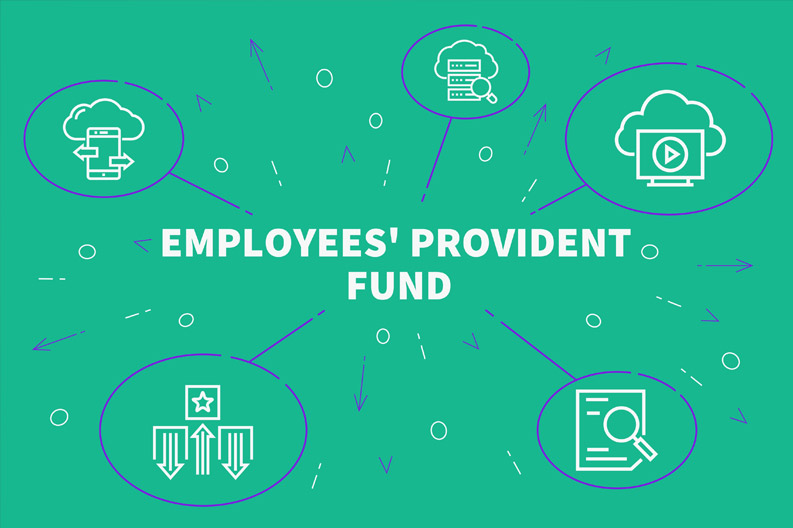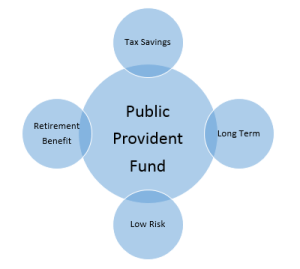A provident fund provides security for your retirement years and was brought to action under the Provident Funds Act, 1925. As a salaried person, there are 3 types of provident funds that you can invest in to add to your future savings. Depending on the type, the Indian Government, your employer, and you contribute a certain portion of income to this fund on a monthly or yearly basis.
Take a look at the 3 types of provident funds that contribute to your future savings.
1. Employer Provident Fund

Epf
Your employer is obliged to start this investment option for you as an employee if there are 20 or more people in the organization. This scheme was initiated by the Indian Government under the Employee Provident Fund and Miscellaneous Provisions Act, in 1952. As a part of this scheme, your employer deducts a fixed sum from your monthly salary and puts this in your Provident Fund Account along with their contribution of the same amount.
Both you and your employer usually need to contribute 12.5% of your basic salary every month as provident fund savings, though there are some exceptions. The amount that you have invested in your EPF account earns a yearly interest, which is currently at 8.55%. The great thing about PPF is that your interest earnings are totally exempt from tax and your invested sum is tax-free too. You can withdraw your investment prematurely, but this will be taxable.
If you don’t withdraw it before time, your EPF investment and earnings are available to you when you retire or two months after you switch jobs. Also, you are allowed to access 75% of the total PPF amount in your account if you have not been employed for a month to meet your expenses.
2. Public Provident Fund

Public Provident fund
Unlike the Employee Provident Fund, the Public Provident Fund is not related to your employer and has been started by the Central Government of India. It can also be started for minors, which is not the case with EPF. You can open your own PPF account at any post office or nationalized bank in India. The maximum amount you can invest in PPF is Rs.1.5 lakh per annum, while you can start the investment by depositing just Rs.500.
To keep your PPF account active you need to make at least one deposit each financial year and can also deposit multiple times a year. You are allowed to deposit a maximum of 12 installments of varied denominations through the year. Public Provident Fund accounts come attached with a maximum 15 year maturity period and a minimum 7 year lock-in period. An extension of up to 5 years is also allowed on maturity.
You can view your PPF funds as a long-term investment and gain from high-interest returns on maturity. Currently, the PPF interest rate is 8%. Your PPF investment can qualify you for tax deductions under Section 80C of the IT Act and your interest earnings are tax-free too.
3. Voluntary Provident Fund

Vpf
Any amount that you wish to invest from your salary over and above your contribution in EPF is known as VPF. It is exclusive to salaried individuals and is safe too as it is monitored by the government. You can benefit from the same interest rate as EPF on your Voluntary Provident Fund investment. However, your employer does not have to match your investment in this case.
Apart from EPF, PPF, and VPF, there is also the Statutory Provident Fund for government employees. A provident fund usually comprises 12% of your monthly salary and a small portion from that amount is also contributed towards your pension scheme. There is an amount allowed as a deduction when you contribute to your provident fund.
Here, under Section 80C of the Income Tax Act, you can claim up to Rs.1.5 lakh basis the amount you contribute annually in your provident fund. However, on maturity do not park your provident fund investment in a savings bank account. Instead, rope in higher interest growth by reinvesting your provident fund amount into a secure investment option like an FD.
You can invest your provident fund money in an FD to keep up with inflation and rising costs while growing your corpus. Choose between cumulative or non-cumulative fixed deposit variants as per your financial needs. You can access the interest payouts on your investment on maturity in case of cumulative FDs. On the other hand, you can access the interest as regular income for non-cumulative fixed deposits.
In order to maximize your returns on FDs, you choose Company FDs from trusted issuers like Bajaj Finance. You can gain high FD interest rates of up to 8.75% when you opt for a cumulative FD with a tenor for a minimum of 36 months. Moreover, awarded ICRA’s MAAA (Stable) and CRISIL’s FAAA/Stable Rating, these FDs are safe and reliable.
They also offer you a range of benefits like doorstep document pickup, online account management, minimum deposit requirements, and additional interest of up to 0.25% on renewal. Thus, FDs are one of the best ways in which you can maximize the returns on your provident fund investment.





![MSME Schemes || Launched By The Government [Explained]](https://tipscrew.com/wp-content/uploads/2019/04/MSME-Schemes-Launched-By-The-Government-1-370x210.png)